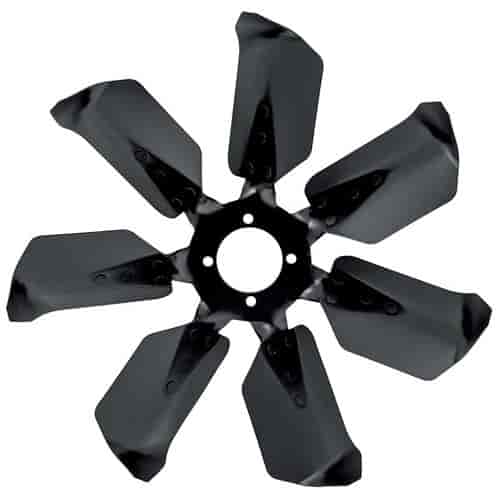See This Report on Fan Blades
Table of ContentsThe Single Strategy To Use For Fan BladesNot known Incorrect Statements About Fan Blades Rumored Buzz on Fan BladesThe Basic Principles Of Fan Blades
To check this, turned off your truck and attempt to spin your fan blade. If you can spin your fan blade, then you have no friction left and your fan clutch assembly needs to be reconstructed or changed. If your fan blade does not spin, your fan clutch is properly engaged.For many years, these will begin to split, positioning a hazard to the radiator, shroud, and hood ought to it break. It's a good concept to replace if yours is beginning to reveal any fractures, or if a loose fan shroud has actually chewed up the beyond the blades. Our brand-new Compatibility checking function is still being updated and revised.
Have any questions about this item? Ask a question here - fan blades. Rated 5/5 based on 1 client reviews Shipped rapidly, simple installation, A+.
Savings (All Discount Rates): $34. 11 (25% off) MSRP: $137. 26 MSRP and cost omit taxes, setup, shipping, and dealership charges. Dealer sets actual rate. Contact dealer for minimal guarantee, inventory level, and return policy information.
Sort Cost Low- > High Price High- > Low Title A- > Z Title Z- > A Product Code A- > Z Item Code Z- > A Leading Ranked Products 1 - 23 of 23.
Getting My Fan Blades To Work
Hayden Automotive warrants for: Fan Clutches (Thermal and Electronic) Fan Clutches (Non-Thermal) Electric Fans, Radiator Fan Motors and Accessories Pulleys, Idlers and Tensioners Semi-Flex Fan to be complimentary from flaws in products or workmanship for a period of 12 months or 12,000 miles. The service warranty period begins on the date the product is provided.
The warranty duration starts on the date the item is provided. The service warranty is approved to the end-user and applies to items which are bought, set up, and used for the functions for which they are originally created. This warranty covers flaws developing under typical use and does not cover malfunctions or failures resulting from misuse, abuse, disregard, inappropriate installation, or incorrect maintenance.

Engine fan clutch unit, 5/8" look at here arbor hole, 1Â 3/4" bolt center, Eaton style coil type thermostatic aspect. Aesthetically, this part does not look exactly like the initial design, however it is quite close.: 1960 - 1970 New EachType: Stock.
Product description Where to buy Mopar 5202 7846AB Engine Cooling Fan Clutch Blade, Inspect Rate on Mopar 5202 7846AB Engine Cooling Fan Clutch Blade, check price on Mopar 5202 7846AB Engine Cooling Fan Clutch Blade, look at this now Mopar 5202 7846AB Engine Cooling Fan Clutch Blade sale online,.
Not known Details About Fan Blades

NOTE1: It is extremely advised that you have 1" of clearance between the fan blade and the fan shroud which the fan blade sits a minimum of an inch into the shroud for maximum cooling advantages (fan blades). NOTE2: These high-performance items are not eligible for any further discounts or advertising pricing.
Cost Savings (All Discount Rates): $42. 11 (27% off) MSRP: $157. 97 MSRP and rate exclude taxes, setup, shipping, and dealership charges. Dealership sets actual price. Contact dealership for minimal service warranty, stock level, and return policy details.
Engine fan go to this site with viscous drive A fan clutch is a thermostatic engine cooling fan that can freewheel at low temperatures when cooling is not required, permitting the engine to heat up much faster, alleviating unneeded load on the engine. As temperatures increase, the clutch engages so that the fan is driven by engine power and moves air to cool the engine.
This saves power, given that the engine does not need to totally drive the fan. However, if engine temperature level increases above the clutch's engagement temperature setting, the fan ends up being totally engaged, therefore drawing a greater volume of ambient air through the automobile's radiator, which in turn serves to maintain or decrease the engine coolant temperature level to an acceptable level.
Fan Blades for Dummies
This is much easier to accomplish due to the fact that the engine is installed longitudinally, with the belt device components installed facing the radiator. The fan is mounted on the crankshaft pulley or among the accessory wheels (e. g. the water pump sheave) and will spin in between the radiator and the engine, drawing air back through the radiator and blowing it over the engine.
In contrast, in a front-wheel drive automobile, the engine is usually installed laterally, with the crankshaft and usually all the major accessory shafts parallel to the front axle, so regarding straight drive the transaxle; a fan mechanically mounted on an accessory sheave would blow sideways and would not deal with the radiator.
The conversion of mechanical energy to electricity and back to mechanical rotary power with a fan motor is less effective than a direct mechanical connection, but this is more than compensated by greater control of an electrical fan through electronic thermostatic controls which can turn the fan entirely off when the engine temperature level is below the setpoint.
Some clutches are digitally managed (instead of bi-metallic strip). These provide the prospective to manage the level of engagement depending upon any variety of inputs. Common managing elements may consist of engine oil temperature level, transmission oil temperature, coolant temperature, A/C system pressures and ambient air temperature level.